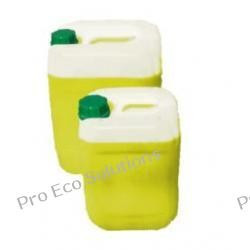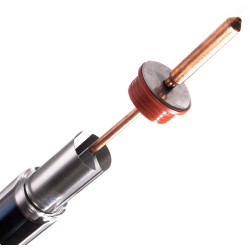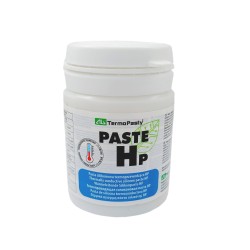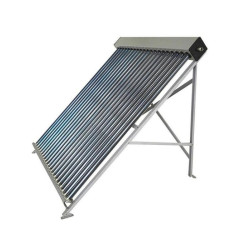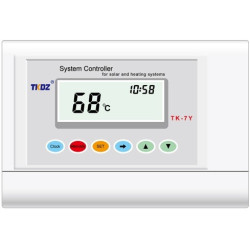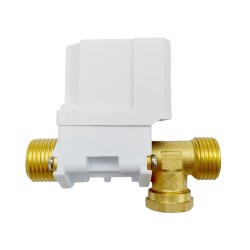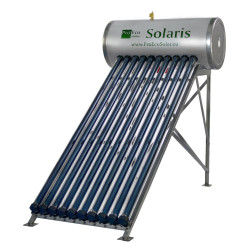The lowest price of this product in last 30 days was 65.00 PLN.
Product categories
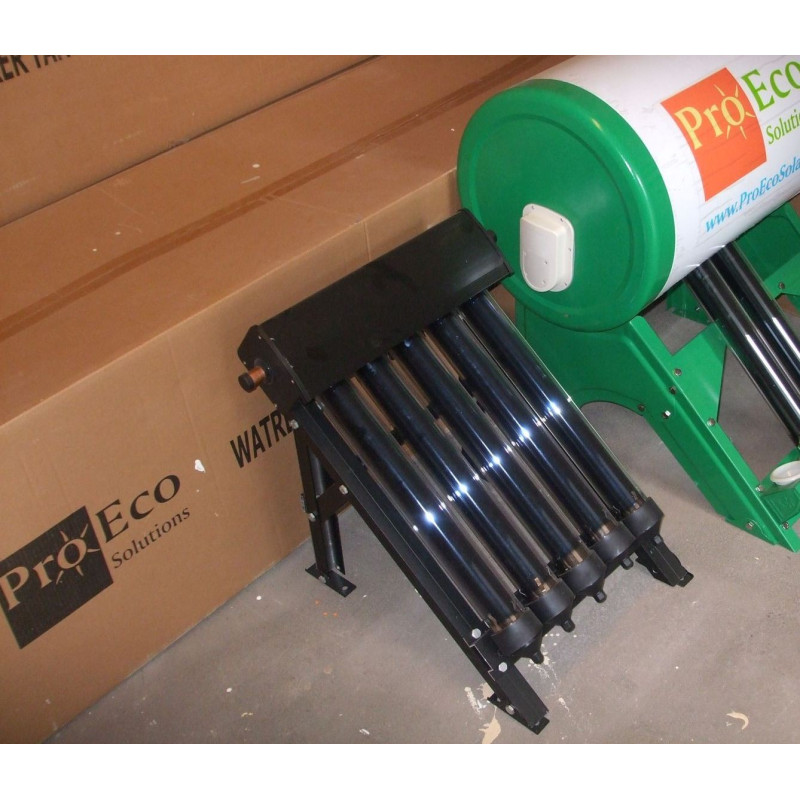

Collector PROECO JNSC-MINI
PROECO SC-MINI
EAN-13: 5902734700803
Solar collector PROECO JNSC-MINI
- 5 vacuum tubes with HEAT PIPE (58/500mm)
- aluminum frame (with possibility of installing on both flat and oblique surface)
528,46 tax excl.
The lowest price of this product in last 30 days was 650.00 PLN.
Solar collector PROECO JNSC-MINI
- 5 vacuum tubes with HEAT PIPE (58/500mm)
- aluminum frame (with possibility of installing on both flat and oblique surface)
![]() Design:
Design:
The solar collector consists of vacuum tubes made of borosilicate glass. High operational safety of borosilicate glass has been achieved thanks to the use of an appropriate mix of SiO2 and B2O3 oxides, which results that the product has high chemical resistance as well as extraordinary purity and uniformity. Borosilicate glass is environment-friendly and can be recycled many times. The process of thermal annealing (hardening) was also used. Together with the low thermal expansion typical for borosilicate glass gives it a particularly high resistance to changes of temperature in comparison to standard glass. Tubes are resistant to hail size up to 25 mm. The use of tubes with a diameter of 47 mm and 58 mm allows concentric placement of one inside the other. The air between the pipes is pumped out, and the pipes are welded together. The vacuum between the pipes is an excellent insulator and prevents the loss of heat. In the process of triple magnetron metallization, an absorber (compound absorbing sun rays and transforming them into heat energy) is applied. The new special absorption layer ALN/AIN-SS/CU with the addition of copper is the next generation of absorption layers. The next layer, that is, the AL/N/AL layer, is characterized by higher efficiency (up to 12%) and excellent absorption properties of direct and diffused radiation. Additional layers of the absorber are designed to keep as much energy as possible inside the tubes and prevent heat loss through infrared radiation. The inside of the vacuum tube can heat up to 300ºC. Inside the vacuum tubes is mounted the so-called "heat pipe." Aluminum radiators inside the vacuum tubes support the process of transfer of energy to the copper heat pipes. The pressure inside the heat pipe was reduced by sucking the air out in accordance with the principle of lowering the boiling point along with the pressure decrease. The liquid inside the heat pipe exchanger boils already at 25 ºC. Copper used for production of the heat pipe is free of oxygen, which ensures long and reliable operation.
High efficiency of the collector results from the ability to absorb diffused radiation (for example, on cloudy days) and maximum reduction of heat loss. Energy is obtained not only from direct sunlight but also from reflected light. The collecting manifold of the collector is made of copper pipe. Inside it, copper sleeves were mounted, in which a heat pipe condenser is inserted. To achieve better contact between the copper surfaces and thus more efficient heat transfer, high-temperature heat conductive pastes are used. The collecting manifold is thermally insulated with mineral wool. Despite the fact that it has slightly worse insulation properties than polyurethane foam, it is a better solution in this case. Mineral wool does not oxidize and is more resistant to high temperatures that can occur, for example, when the fluid circulation in the installation stops. The collecting manifold also has room for the temperature sensor. The housing of the collecting manifold and its frame are made of aluminum. The use of lightweight metals is quite important when installing collectors on building roofs.
![]() Principle of operation:
Principle of operation:
Energy from the sun rays heats the inside of the vacuum tubes. The heat from the inside of the pipe is transferred to the "heat pipes" through the aluminum radiators. After a while, at 25 ºC the liquid in the "heat pipe" begins to evaporate. The vapor goes up to the exchanger head (condenser) where it releases heat through the collecting manifold and condenses. It flows down again into the "heat tube" to repeat the whole process. The heating medium flowing through the collector (for example, glycol) has no contact with the vacuum tubes and the absorber applied on them, but only receives heat from the "heat tube" condenser. The connection of the "heat pipes" with the heat exchanger (in which the glycol flows) is "dry".
The simplest and cheapest system is a gravitational system. The heating medium heated in the collector goes to the top of the tank without the use of a circulating pump, then after releasing the heat in the tank, the cooled medium returns to the collector. In such system, it is necessary to place the tank above the collectors. In practice, this forces the collectors to be placed on frames on the ground and the storage tank on the first floor in the building.
The second solution used is a system with forced circulation. It has no disadvantages of gravitational circulation installations, but it is necessary to use a pump and an automatic control system. Usually, tanks equipped with two coils (bivalent tanks) are used in such circulation. Thanks to them work with two heat sources is possible. The solar system is connected to the lower coil and heating boiler to the upper coil. With favorable conditions (the temperature of the medium in the collector is 5 to 8 degrees Celsius higher than the temperature of the water in the tank), the circulating pump is activated, which pumps the heated medium from the collector to the coil in the tank.
In the event of a vacuum tube failure, the entire system will continue to operate, although the efficiency of the system will be lower. There are no fluids in the vacuum tubes, which means that the tube can be dismantled at any time without draining the system.
We recommend using double pipes pre-insulated with synthetic rubber foam and increased thermal resistance for quick and easy connection of the collector with the accumulation tank. The pipes are made either of stainless steel or soft copper. Thanks to their flexibility, no additional fittings and connectors are needed between the collector and the tank. They are also equipped with an integrated control cable (for the temperature sensor in the collector). In addition to maintaining the highest technical parameters to minimize energy losses, this system significantly reduces the time of installing and increases its reliability.
![]() Advantages:
Advantages:
- Higher efficiency of the vacuum collector with the "heat pipe" system (work throughout the year).
- Possibility to choose different sizes of collectors for different sizes of tanks.
- Damage to the vacuum pipe from the "heat pipe" does not turn off the entire system, but only reduces the efficiency of the collector.
- Lower likelihood of clogging of the collector, which may occur with flat or U-tube collectors.
- Possibility of coupling with a central heating system to reduce energy costs.
![]() Installation and operating instructions:
Installation and operating instructions:
| Frame color: | black |
| manifold color: | black |
| ------------------------------ | COLLECTOR: |
| Number of vacuum pipes | 5 |
| Heat pipe use | yes |
| Size of vacuum tubes | diameter: 58 mm. outside /47 mm. inside, wall thickness: 1,6 ± 0,15 mm., length: 500 mm. |
| Type of absorber | (aluminum nitride with copper and steel layers) CU/SS-ALN(H)/SS-ALN(L)ALN |
| Efficiency of the absorption | α = 0.92~0.96 (AM1.5) |
| Lossy emission | ε = 0.04~0.06 (80℃ ± 5℃) |
| Degree of vacuum | P. ≤5.0X10ˉ³ (PA) |
| Temperature of stagnation | 260~300℃ (inside empty tube) |
| Average heat loss | ULT 0.4~0.6 W/(m2~﹡℃) |
| Resistance to heil | Φ25 mm |
| Lifespan | > 15 years |
| ------------------------------ | FRAME: |
| Material | aluminium |
| Resistance to wind | 180 km/h |
- Heater capacity (l.):
- 65
- Average demand for:
- educational/training model
- Hot water collection:
- under pressure from the water mains
- Surface mounting:
- for flat or sloping from 26 to 42 degrees
- Number of vacuum tubes (pcs):
- 6
- Use of Heat-Pipe:
- YES
- Water tank:
- stainless steel SUS 304 0,4 mm
- Heat exchanger in the tank:
- nickel-plated copper heat-pipe sleeves
- Cover of the tank:
- PVDF
- Bracket:
- aluminium
Customers who bought this product also bought:
The lowest price of this product in last 30 days was 600.00 PLN.
The lowest price of this product in last 30 days was 80.00 PLN.
The lowest price of this product in last 30 days was 40.50 PLN.
The lowest price of this product in last 30 days was 1,400.00 PLN.
The lowest price of this product in last 30 days was 180.00 PLN.
The lowest price of this product in last 30 days was 36.00 PLN.
The lowest price of this product in last 30 days was 2,500.00 PLN.

 36 rat x ~22 zł
36 rat x ~22 zł



